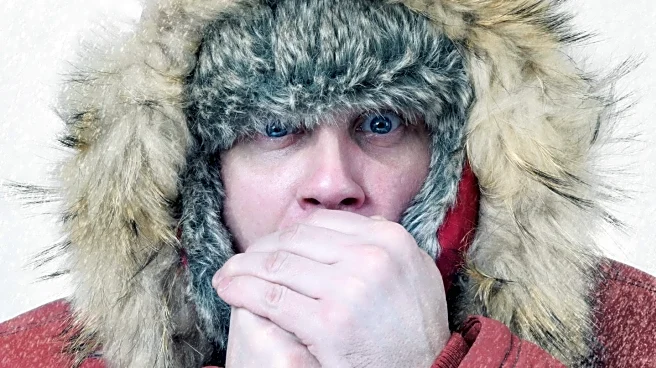What's Happening?
Hypothermia, a medical emergency caused by prolonged exposure to cold temperatures, can develop rapidly in extreme conditions. According to recent findings, hypothermia can occur in as little as five minutes
in air temperatures of -50°F (-45.5°C) if individuals are not properly dressed. In water, hypothermia sets in even faster due to water's high thermal conductivity, cooling the body 24 times faster than air. Death from hypothermia can occur in under an hour in extremely cold conditions, highlighting the urgent need for proper clothing and awareness of environmental risks.
Why It's Important?
The rapid onset of hypothermia in extreme cold conditions poses significant risks to public safety, particularly for outdoor workers, adventurers, and those living in areas prone to severe weather. Understanding the speed at which hypothermia can develop is crucial for emergency preparedness and response strategies. This information is vital for industries such as construction and outdoor recreation, where workers and participants are exposed to cold environments. It underscores the importance of safety protocols and protective gear to prevent life-threatening situations.
What's Next?
In response to these findings, industries and communities may implement stricter safety guidelines and training programs to educate individuals about the risks of hypothermia and the importance of proper clothing and equipment. Emergency services might enhance their readiness to respond to hypothermia cases, particularly during winter months. Additionally, public health campaigns could focus on raising awareness about the dangers of cold exposure and promoting preventive measures.
Beyond the Headlines
The data also suggests a need for further research into the physiological effects of cold exposure and the development of more effective protective clothing and gear. There may be ethical considerations regarding the responsibility of employers to ensure the safety of their workers in extreme conditions. Long-term, this could lead to innovations in clothing technology and changes in occupational health standards.












